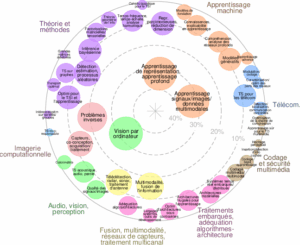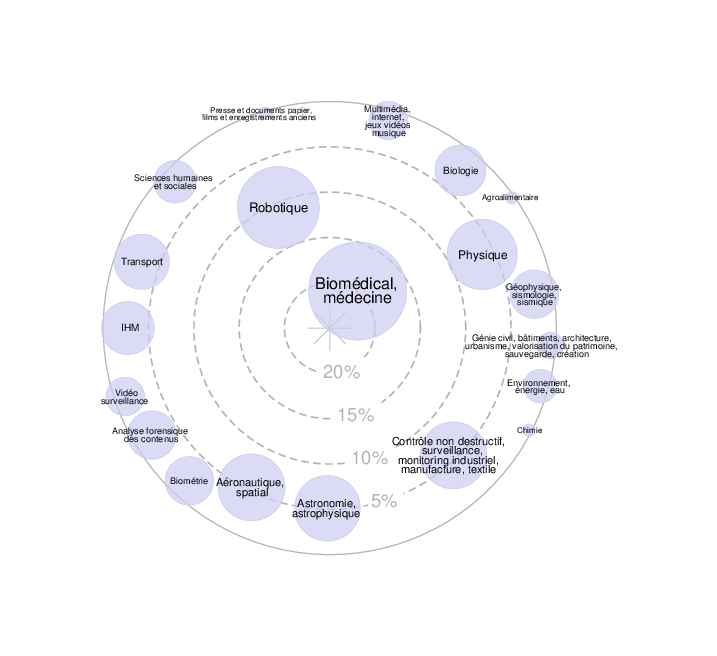——————————————————————————————————————–
For detailed information, please visit: https://cloud.irit.fr/s/eHMsZcVoigPfenR
——————————————————————————————————————–
Stage M2
Keywords: ultrasound, IRM, fusion, deep learning, diffusion models, DDRM.
Where: Institut de Recherche en Informatique de Toulouse (IRIT) in Toulouse.
Project Description
Glial tumors are the most common primary brain tumors, with significant variability in aggressiveness and prognosis [1]. Surgical resection is the standard treatment, as survival outcomes strongly depend on the extent of resection (ER). Accurate tumor boundary identification and real-time detection of residual tissue during surgery are critical. However, traditional neuronavigation systems based on preoperative imaging are limited by intraoperative brain shifts, and high-field intraoperative MRI, while effective, is costly, complex, and unsuitable for continuous imaging [2]. Emerging real-time multimodal navigation systems, combining ultrasound (US) and MRI (UMNS), offer promising solutions [3]. While MRI provides excellent tissue contrast, ultrasound delivers real-time imaging of deep structures. Yet, integrating these modalities poses technical challenges due to intrinsic differences and registration errors. Advanced harmonization algorithms could revolutionize surgical navigation, optimizing resection precision, reducing residual tumors, and improving patient outcomes while preserving critical neurological functions.
In this internship, the focus will be on seeking to develop advanced methods for automatic MRI and ultrasound image fusion to improve neuro-oncology diagnostics and surgical planning. By leveraging innovative algorithms combining mathematical models and statistical learning [4], [5], the project aims to enhance image quality, including contrast, resolution, and noise reduction. Building on prior MRI-US fusion work [6], it introduces improved alignment techniques to address registration errors and overcome challenges like geometric distortions and contrast variations, ultimately advancing clinical care.
Required skills
• 2nd year of Msc and/or 3rd year of an engineering school,
• Strong background in signal and image processing, or applied mathematics,
• Proficiency in machine learning (ML) techniques, with a particular focus on CNN,
• Strong programming skills in either Matlab or Python,
• Proficiency in the English language,
• An interest in medical US imaging would be a plus, without requiring any prior knowledge.
Starting date: As soon as possible and no later than March 31, 2025.
Application: Prospective candidates should submit the following documents as a SINGLE PDF file:
- University transcripts
- A one-page cover letter
- Curriculum vitae (CV), including any publications if applicable
- References
Please send all documents to duong-hung.pham@irit.fr and denis.kouamé@irit.fr
References:
[1] I. Blystad et al., “Quantitative mri using relaxometry in malignant gliomas detects contrast enhancement in peritumoral oedema,” Sci. Rep., vol. 10, no. 1, Oct. 2020.
[2] C. Roder et al., “Beneficial impact of high-field intraoperative magnetic resonance imaging on the efficacy of pediatric low-grade glioma surgery,” Neurosurgical Focus, vol. 40, no. 3, E13, Mar. 2016.
[3] C. Liang et al., “A new application of ultrasound-magnetic resonance multimodal fusion virtual navigation in glioma surgery,” Annals of Translational Medicine, vol. 7, no. 23, pp. 736–736, Dec. 2019.
[4] B. Kawar et al., Denoising diffusion restoration models, 2022.
[5] Z. Zhao et al., “Ddfm: Denoising diffusion model for multi-modality image fusion,” in 2023 IEEE/CVF ICCV, IEEE, Oct. 2023, pp. 8048–8059.
[6] O. El Mansouri et al., “Fusion of magnetic resonance and ultrasound images for endometriosis detection,” IEEE TMI, vol. 29, pp. 5324–5335, 2020





